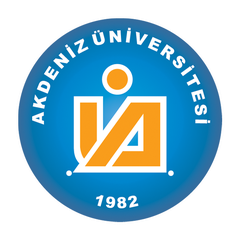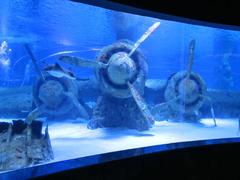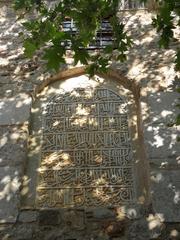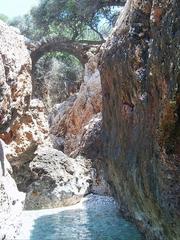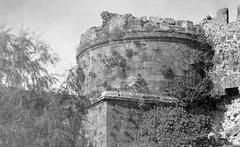Karain Cave Visiting Hours, Tickets, and Antalya Historical Sites Guide
Date: 14/06/2025
Introduction to Karain Cave and Its Significance
Karain Cave, nestled in the Taurus Mountains northwest of Antalya, Turkey, is a monumental testament to human prehistory and cultural evolution. As one of the most significant archaeological sites in the region, Karain Cave offers a rare window into over 500,000 years of continuous human occupation, with evidence of both Neanderthal and early Homo sapiens presence. The cave’s rich stratigraphy, extensive archaeological finds, and unique geological features provide invaluable insights into ancient human behaviors, technological progress, and environmental adaptations during the Paleolithic era and beyond.
Located about 27 kilometers from Antalya city center at an altitude of 430 meters, Karain Cave overlooks the Travertine Plain, providing spectacular views of the Mediterranean coastline and western Taurus Mountains. The historical layers of the cave reveal a complex narrative: from prehistoric stone tools and faunal remains to Greek and Roman inscriptions indicating ritual use. This enduring cultural importance is reflected in the site’s inclusion on the UNESCO World Heritage Tentative List (UNESCO Tentative List).
Visitors can explore the cave’s vast chambers, view prehistoric artifacts in nearby museums, and immerse themselves in the scenic landscape that nurtured early human communities. This comprehensive guide covers essential information such as visiting hours, ticketing, accessibility, guided tours, and nearby attractions, helping travelers and history enthusiasts plan an enriching and memorable visit.
For up-to-date information, consult official resources and tourism platforms (whattodoinantalya.com, turkeytravelplanner.com, Antalya Museum Directorate).
Table of Contents
- Introduction
- Historical and Archaeological Significance
- Scientific Research and Methodologies
- Visitor Information
- Site Facilities and Accessibility
- Guided Tours and Interpretation
- Inside the Cave: What to Expect
- Safety and Travel Tips
- Visitor Etiquette and Regulations
- Nearby Attractions
- Visuals and Media
- Frequently Asked Questions (FAQ)
- Conclusion and Call to Action
- References and Further Reading
Historical and Archaeological Significance
Prehistoric Occupation and Human Evolution
Karain Cave represents one of the most significant prehistoric sites in Turkey, with a continuous record of human occupation stretching back about 500,000 years (whattodoinantalya.com). Excavations have revealed its use by Neanderthals and early Homo sapiens, making it the only site in Turkey with direct evidence of Neanderthal presence (side-turkey.com). This sequence is invaluable for understanding the migration, adaptation, and cultural development of early humans in Anatolia and the Near East.
The cave’s stratigraphy has produced a wealth of Paleolithic artifacts, including stone tools, bone implements, and ornaments. Notably, both Mousterian (Neanderthal-associated) and Upper Paleolithic (early modern human) industries are present, allowing researchers to trace the transition between these populations (turkeytravelplanner.com).
Faunal Remains and Environmental Insights
Karain Cave’s deposits are rich in faunal remains, including bones of now-extinct megafauna such as elephants and hippopotamuses (whattodoinantalya.com). These remains provide direct evidence of the region’s paleoclimate and environmental conditions during the Pleistocene, indicating a once-lush landscape that supported a diverse ecosystem.
The cave’s elevated position offered natural defense, a vantage point over fertile plains, and a stable internal temperature, making it an ideal shelter throughout prehistory (turkeytravelplanner.com).
Ritual and Symbolic Use
Karain Cave served not only as a shelter but also as a site of ritual and worship, especially during the Roman period, as indicated by votive inscriptions and rock carvings near its entrance (whattodoinantalya.com). This continuity highlights the cave’s enduring spiritual and cultural significance.
Contribution to Anatolian and World Prehistory
Karain Cave’s archaeological sequence is among the most complete in Eurasia, bridging the gap between the Middle and Upper Paleolithic and serving as a reference point for the study of human evolution (whattodoinantalya.com). Artifacts from the site are displayed in the onsite Karain Museum and the Antalya Museum, contributing to ongoing research and public education.
Scientific Research and Methodologies
Excavation History
Systematic archaeological work at Karain Cave began in 1946 and continues today, utilizing modern methods such as stratigraphic excavation, radiometric dating, and paleoenvironmental analysis (whattodoinantalya.com). The cave’s deep sediment layers support precise chronological reconstruction of human activity and environmental change.
Recent research focuses on lithic assemblages, faunal remains, and microstratigraphy to understand occupation phases and cultural transitions. The co-occurrence of Mousterian and Upper Paleolithic tool types is particularly significant for studying interactions between Neanderthals and modern humans.
Human Fossils and Paleoanthropology
Karain Cave has yielded fossils, including teeth and cranial fragments, attributed to both Neanderthals and early Homo sapiens. These are vital for paleoanthropological and genetic studies, helping clarify the relationships between ancient Anatolian populations and those in neighboring regions.
Environmental and Climatic Reconstructions
Sedimentary records, combined with faunal and botanical remains, enable scientists to reconstruct past climates and ecosystems. Stable isotope analysis and pollen studies help chart environmental shifts and their impact on human habitation.
Visitor Information
Location and Getting There
Karain Cave is situated about 27 kilometers northwest of Antalya city center, near Yağca village. The site is accessible by car via the Antalya–Burdur highway (D650) and is well-signposted (Google Maps). Public transport options include minibuses (dolmuş) to Yağca village, followed by a short taxi ride or a 1.5-kilometer walk to the cave. Parking is available at the base of the hill.
Visiting Hours and Tickets
- Summer (April–October): 9:00 AM – 7:00 PM
- Winter (November–March): 9:00 AM – 5:00 PM
- Closed on Mondays
- Last entry: 30 minutes before closing (Antalya Museum Directorate).
Ticket Prices (as of 2025):
- Standard adult: 60 TRY
- Discounts for students, children, Turkish citizens
- Children under 8: Free
- Museum Pass Turkey accepted (Museum Pass Turkey)
Tickets can be purchased onsite. Online booking may be available for Museum Pass holders.
Site Facilities and Accessibility
The cave is located on a limestone hill, requiring an ascent of approximately 400 stone steps. While the path is well-maintained with shaded rest areas, it may be challenging for those with limited mobility. The cave itself is not wheelchair accessible.
At the base, you’ll find a ticket office, restrooms, a café, and a souvenir shop. The Karain Cave Archaeological Museum, located nearby, displays original artifacts from the site (Antalya Museums). The museum is included with the cave’s admission.
Guided Tours and Interpretation
Guided tours are highly recommended and can be arranged on-site for an additional fee (150–200 TRY per group). Tours last about 45–60 minutes and provide in-depth context about the cave’s archaeological and historical significance (Antalya Tourism Board).
Interpretive panels are provided in Turkish and English. For a self-guided experience, download the official Karain Cave audio guide app for iOS or Android.
Inside the Cave: What to Expect
Karain Cave is one of the largest natural caves in Turkey, with a main chamber approximately 20 meters high and 50 meters wide. The interior is subtly lit, but some areas remain dim—bring a flashlight or use your phone’s torch. The cave’s floor is uneven and can be slippery; sturdy, non-slip footwear is essential.
Protected excavation pits and display cases showcase replicas of significant finds, including Paleolithic tools, Neanderthal and Homo sapiens fossils, and animal bones. Temperatures inside the cave remain cool year-round (15–18°C).
Safety and Travel Tips
- Footwear: Wear sturdy, non-slip shoes.
- Climb: Prepare for a moderate ascent; rest benches are available along the stairway.
- Water: Carry water, especially during summer.
- Sun Protection: Use a hat and sunscreen for the climb.
- Photography: Allowed without flash; tripods are not permitted.
- Flashlight: Recommended for dimly lit areas.
Visitor Etiquette and Regulations
- Do not touch or remove rocks, artifacts, or formations.
- Smoking, eating, and drinking are prohibited inside the cave.
- Littering is forbidden—use provided bins.
- Pets are not allowed inside the cave or museum.
- Large bags may be inspected at the entrance.
Nearby Attractions
- Karain Cave Archaeological Museum: Adjacent to the site, featuring original artifacts from the cave.
- Termessos Ancient City: About 20 km away, known for its well-preserved ruins.
- Düzlerçamı National Park: Offers nature trails and wildlife.
- Antalya Archaeological Museum: Houses significant finds from Karain Cave and other regional sites.
- Düden Waterfalls: A popular natural attraction in Antalya.
Visuals and Media
View Karain Cave Location on Map
For a richer experience, view high-quality images of Karain Cave’s interior and surroundings. Interactive maps and virtual tours are recommended for planning.
Frequently Asked Questions (FAQ)
What are the Karain Cave visiting hours?
Open daily (except Mondays), 9:00 AM – 7:00 PM in summer, 9:00 AM – 5:00 PM in winter. Last entry is 30 minutes before closing.
How much do tickets cost?
Standard adult tickets are 60 TRY as of 2025, with discounts for students, children, and Turkish citizens. Children under 8 enter free.
Is Karain Cave wheelchair accessible?
No, due to the steep stone staircase and natural terrain.
Are guided tours available?
Yes, English-speaking tours are available on-site for an additional fee.
Can I take photos inside the cave?
Personal photography is permitted without flash; tripods and flash photography are not allowed.
Is parking available?
Yes, parking is provided at the base of the hill.
What other attractions are nearby?
The Karain Archaeological Museum, Termessos ancient city, and Düzlerçamı National Park are all close by.
Conclusion and Call to Action
Karain Cave is a must-visit destination for anyone interested in human history, archaeology, and Antalya’s historical sites. Its rich prehistoric legacy, accessible visitor facilities, and scenic location promise an educational and inspiring experience. Plan your visit by checking current hours and ticket prices, consider a guided tour for deeper insight, and explore nearby attractions to enrich your trip.
For more travel tips, interactive maps, and detailed guides, download the Audiala app and follow local tourism platforms. Begin your journey through time at Karain Cave and discover one of Turkey’s most treasured historical sites.
References and Further Reading
- Karain Cave, 2025, What to Do in Antalya (whattodoinantalya.com)
- Karain Cave, 2025, Turkey Travel Planner (turkeytravelplanner.com)
- Karain Cave Visiting Hours and Tickets, 2025, Antalya Museum Directorate (Antalya Museum Directorate)
- Karain Cave, 2025, Antalya Tourism Board (Antalya Tourism Board)
- Museum Pass Turkey, 2025 (Museum Pass Turkey)
- Karain Cave, 2025, UNESCO World Heritage Tentative List (UNESCO Tentative List)
